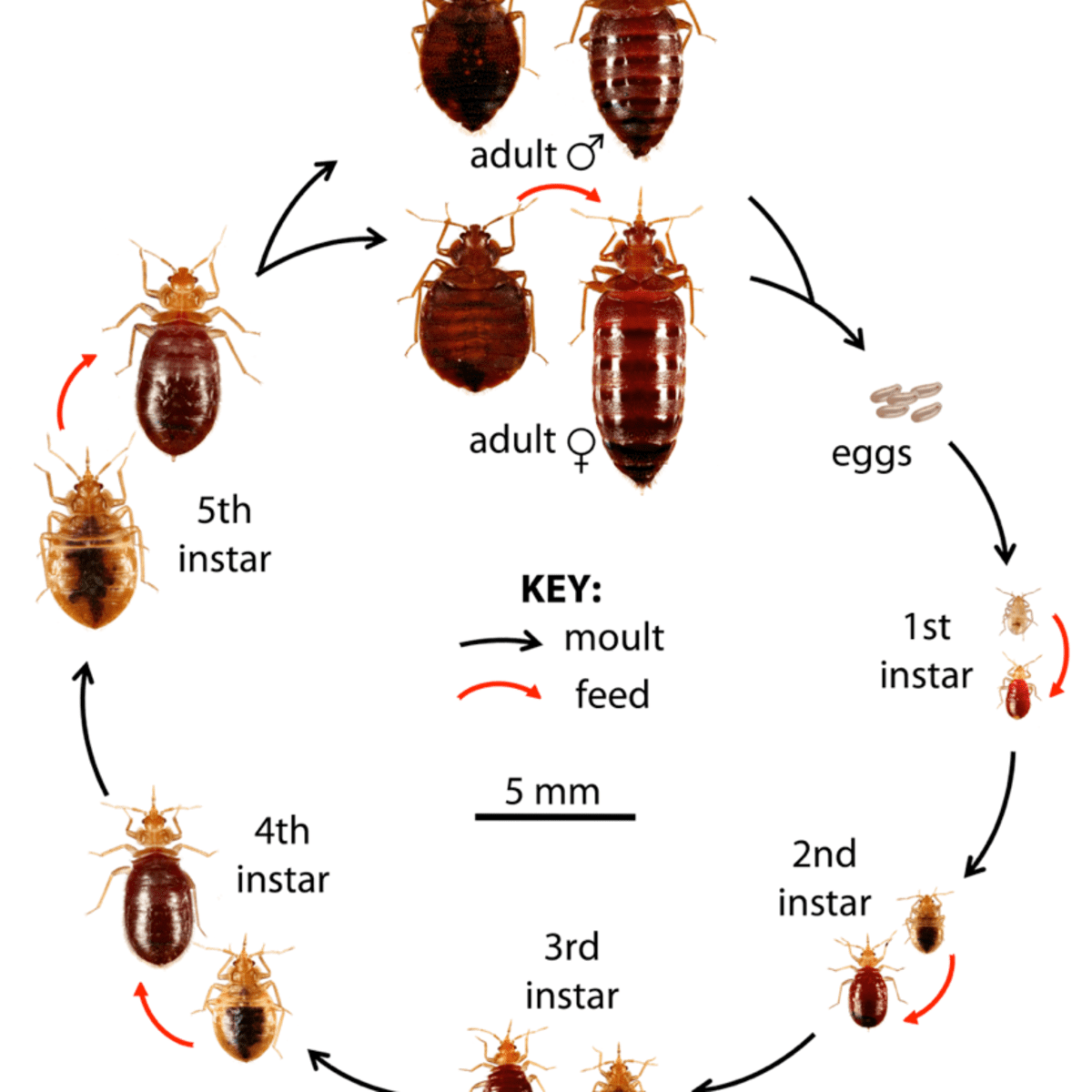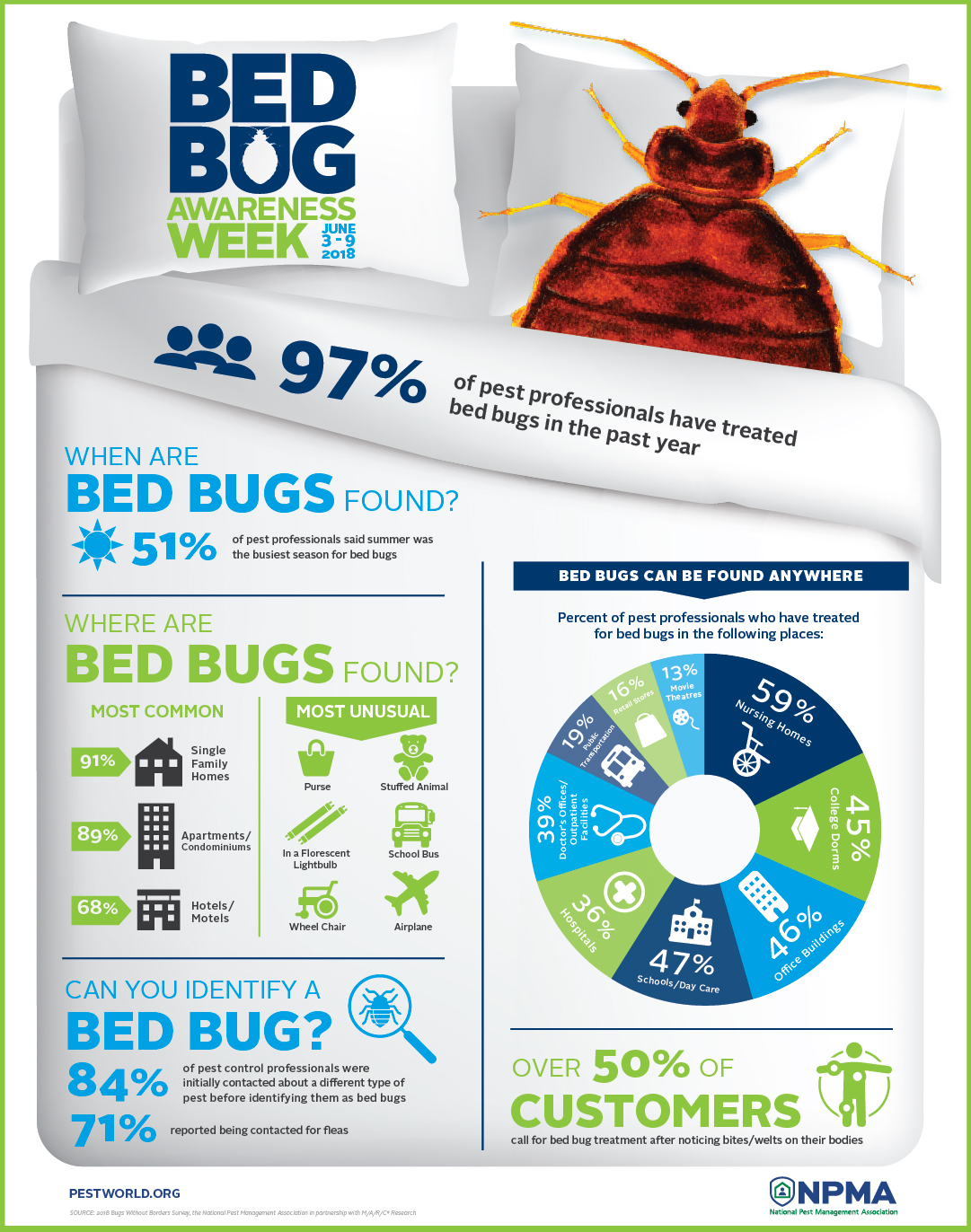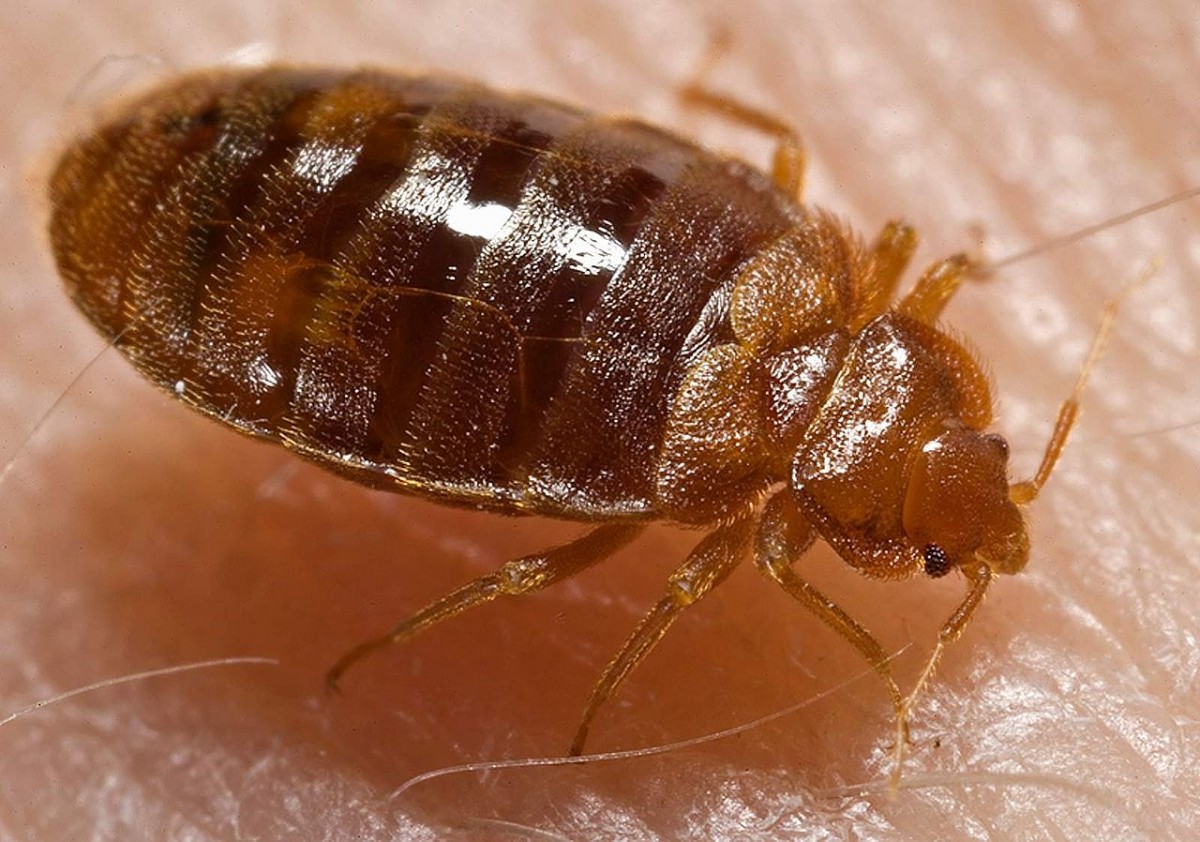As a homeowner, the thought of bed bugs invading my home is petrifying. I’ve heard the horror stories of people having to throw away furniture, replace mattresses, and even having to move out of their homes for months. So naturally, I’m wondering: How long does bed bug treatment take? In this article, I’ll explore the answer to this question and provide helpful tips for eliminating and preventing future bed bug infestations.
Types of Bed Bug Treatment

My bed bug treatment plan depends on the level of infestation and environment. Common treatments include:
- Insecticide Sprays – Insecticides are sprayed directly onto the bed and other surfaces. These sprays are designed to kill bed bugs on contact.
- Heat Treatment – Heat treatment is a non-chemical method of treating a bed bug infestation. Temperatures of over 120 degrees Fahrenheit are used to kill bed bugs and their eggs. Heat treatments are often used in combination with other treatments.
- Steam Treatment – Steam treatment is another non-chemical method of killing bed bugs and their eggs. Steam is applied to the affected area with a steam cleaner to kill bed bugs and their eggs.
- Vacuuming – Vacuuming is an effective way to remove bed bugs and eggs from the affected area. Vacuums with HEPA filters are recommended for maximum effectiveness.
- Encasements – Encasements are a type of bedding that is designed to trap bed bugs and prevent them from escaping. Encasements should be placed on all mattresses and box springs in the affected area.
- Insecticide Dust – Insecticide dust can be applied to cracks and crevices in the affected area to kill bed bugs and their eggs. It is also effective in hard-to-reach areas such as behind baseboards and under furniture.
Every treatment plan is tailored to the individual situation, so it’s important to consult a professional before beginning any bed bug treatment.
How Long Does Each Treatment Take?

- Heat treatment: typically takes one to two days depending on the size and layout of the home
- Chemical treatment: can take one to two days depending on the size of the home
- Fumigation: typically takes one to two weeks depending on the size and layout of the home
- Steam treatment: typically takes one to two hours depending on the size of the home
Depending on the size and layout of the home, and the type of treatment, bed bug treatment can take anywhere from one to two days to one to two weeks. Heat treatment and chemical treatment usually take one to two days, while fumigation and steam treatment typically take one to two hours and one to two weeks, respectively.
Heat Treatment

- Can be completed in 1-2 hours.
- Eliminates all stages of bed bug life cycle.
- Uses high temperature to kill bed bugs and eggs.
- Heat is circulated throughout the room or area being treated with specialized equipment.
- Heat treatment is non-toxic and safe.
- Can be used in combination with other treatments.
- Heat treatment is often the most effective way to get rid of bed bugs.
Chemical Treatment

- Preparation: Clean bedding, linens, curtains, and clothing in hot water and dry them on the highest dryer setting. Vacuum your bed and surrounding area thoroughly.
- Application: Apply insecticidal dusts, such as diatomaceous earth, to all cracks and crevices. Spray insecticides, such as pyrethrins, into places where bed bugs hide. Treat mattresses and box springs with encasements.
- Follow-up: Monitor the infested areas for 2-3 weeks after treatment. If necessary, reapply insecticides.
Fumigation

- Typically takes one to three days.
- The entire structure is sealed off and filled with a gas or aerosol insecticide.
- The gas penetrates through cracks and crevices, killing any bed bugs and eggs.
- After the treatment, the structure must be ventilated.
- The advantage of fumigation is that it covers a large area and is effective for killing bed bugs in all life stages.
Factors that Affect Treatment Duration

| Factor | Description |
|---|---|
| Size of Infestation | The size of the infestation has a direct impact on the length of treatment. A larger infestation will require a longer treatment. It is important to note that a single infested room can be just as bad as a large infestation, depending on the severity of the problem. |
| Location of Infestation | The location of the infestation can also affect the length of treatment. Treatments in hard to reach places such as behind baseboards, in mattresses, and in cracks and crevices will take longer. |
| Type of Treatment Used | The type of treatment used can also affect the length of treatment. For example, heat treatments are generally quicker than other methods, while chemical treatments can take longer. |
| Effective Preparation | Proper preparation is key to a successful bed bug treatment. If the affected area is not properly prepared, the treatment may take longer, as more product may need to be applied to ensure a successful outcome. |
| Follow-up Treatments | Follow-up treatments may be necessary to ensure that the bed bug problem is completely eradicated. Depending on the severity of the infestation, follow-up treatments may increase the length of the treatment. |
The length of the bed bug treatment depends on a variety of factors. Size of infestation, location of infestation, type of treatment used, effective preparation, and follow-up treatments all have the potential to affect the duration of the treatment. A larger infestation and a treatment in hard to reach areas will take longer, while proper preparation and follow-up treatments may increase the length of treatment. Heat treatments are generally quicker than other methods, while chemical treatments can take longer. It is important to note that a single infested room can be just as bad as a large infestation, depending on the severity of the problem.
Pros and Cons of Bed Bug Treatment

| Pros | Cons |
|---|---|
| Effective against bed bug populations quickly | Some treatments are potentially hazardous |
| Can be used safely in occupied rooms | Some treatments may require a number of repeat applications |
| Can be relatively low cost | May require specialized equipment |
Bed bug treatment can be an effective way of dealing with an infestation. The effectiveness of the treatment depends on the type of treatment used, the size of the population and the extent of the infestation. Pros of bed bug treatment include the fact that it can be effective against bed bug populations quickly, can be used safely in occupied rooms, and can be relatively low cost. Cons of bed bug treatment include the fact that some treatments are potentially hazardous, may require a number of repeat applications and may require specialized equipment.
How to Prepare for Bed Bug Treatment

- Remove all clutter from the affected area. This will give the bed bug treatment team more room to work and allow them to access all areas.
- Wash all bedding, linens, and clothing in the affected area in hot water with detergent. Make sure to dry them on the highest heat setting possible.
- Remove all items from furniture and closets in the affected area, including books, toys, and other items, and place them in sealed plastic bags.
- Vacuum the affected area and dispose of the vacuum bag immediately.
- Move beds and furniture away from walls, and seal any cracks and crevices in the affected area, including around baseboards and floorboards.
- Cover mattresses and box springs with mattress covers and pillow cases.
- Cover all electrical outlets, light switches, and other openings in the affected area with tape or plastic.
- Cover all air vents in the affected area with plastic or aluminum foil.
- Remove all pets from the affected area.
- Close all windows and doors in the affected area.
What to Expect During Treatment

Bed bug treatment typically begins with a thorough inspection of the affected areas. Bed bugs are small, and they can hide in a variety of places. During the inspection, I’ll look for signs of bed bugs such as eggs, shed skins, and live adults. I’ll also look for any potential hiding places such as cracks and crevices in walls, furniture, and flooring.
Once the inspection is complete, I’ll determine the best method of treatment. This may involve a combination of chemical and non-chemical methods, such as steam treatments, vacuuming, and encasements.
| Treatment Method | Description |
|---|---|
| Chemical | Applying a chemical insecticide to the affected area to kill bed bugs |
| Non-Chemical | Using a vacuum or steam to remove bed bugs and their eggs |
| Encasements | Covering mattresses and box springs with special covers to prevent bed bugs from entering or escaping |
During the treatment, I’ll work to ensure that the bed bugs are eliminated and that they don’t return. It’s important to follow my instructions and to be patient during the treatment process, as it may take several weeks or even months to completely eliminate the bed bugs.
I may also suggest some additional steps to help prevent bed bugs from returning. These may include washing bedding and clothing in hot water and sealing cracks and crevices in walls, furniture, and flooring.
After the treatment is complete, I’ll inspect the area again to make sure that the bed bugs are gone. I’ll also provide additional advice on how to prevent the bed bugs from returning.
What to Do After Treatment
Once my bed bug treatment is complete, there are a few steps I need to take to ensure the bugs don’t come back.
| Tasks | Description |
|---|---|
| Wash Clothes and Bedding | Wash all clothes and bedding in hot water. Additionally, use hot dryer to dry them, as this will kill any surviving bed bugs. |
| Vacuum Regularly | Using a vacuum cleaner, vacuum all areas of the house, especially areas around the bed, furniture, carpets, and baseboards. |
| Seal Cracks and Crevices | Seal all cracks and crevices around the home, such as windows, walls, and doorways, to prevent any new bugs from entering. |
| Check for Infestations Regularly | Keep an eye out for signs of new infestations and check regularly for any new bugs or eggs. |
Following these steps will help to ensure the bed bug infestation is gone for good.
Prevention and Maintenance Tips
To prevent bed bugs from becoming an infestation, it is important to take preventative measures and to be vigilant about their presence. Vacuum carpets and furniture regularly, and remove clutter where bed bugs may hide. Ensure that any second-hand furniture is thoroughly inspected for signs of bed bugs. Make sure to keep an eye out for signs of bed bugs, such as reddish-brown spots on bedding, as well as tiny black spots on furniture and carpets. If you suspect that bed bugs may have entered your home, contact a pest control professional immediately.
It is also important to take maintenance steps to prevent a bed bug infestation from recurring. Regularly inspect furniture and carpets for signs of bed bugs. Vacuum carpets, upholstered furniture and bedding regularly. Wash bedding and clothing in hot water and then dry on high heat. Additionally, seal any cracks in walls or floors and use bed bug-proof encasements on mattresses and box springs.
Frequently Asked Questions
How long will bed bug spray last?
The longevity of bed bug sprays can vary depending on the type of spray and the product’s active ingredients. Generally, bed bug sprays are effective for up to 12 weeks, with some products lasting up to 8 months. To maximize the effectiveness of the spray, it should be reapplied periodically, depending on the manufacturer’s instructions.
What is the best way to ensure bed bug treatment is effective?
Bed bug treatment must be comprehensive and thorough to be successful. To ensure the treatment is effective, start by identifying and eliminating all potential sources of bed bugs, such as second-hand furniture or clothing. All infested items should be washed and vacuumed before treating the area with an insecticide. All crevices and cracks should be sealed to prevent bed bugs from entering and re-infesting the area. Additionally, monitoring the area for a few weeks after treatment is important to ensure that any remaining bed bugs have been eliminated.
What are the most common methods of bed bug fumigation?
Fumigation is the process of using a chemical gas to eliminate bed bugs from an infested area. The most common fumigants used are Vikane, sulfuryl fluoride and methyl bromide. These chemicals are injected into the air and penetrate into walls, furniture, carpets and other areas. Bed bug fumigation generally requires the occupants of the home to be evacuated for a period of time in order to allow the fumigant to work.
Are there any precautions to take before using bed bug spray?
When using bed bug spray, it is important to take the necessary precautions to ensure safety and effectiveness. Ensure the area is well-ventilated, wear protective clothing, and avoid contact with skin, eyes, and mouth. Do not spray near food, pets, or plants, and read the safety instructions on the label carefully before use. Make sure to keep the spray out of reach of children and store it in a cool and dry place.
How long does it take for bed bug fumigation to be effective?
Fumigation is typically one of the most effective treatments for bed bugs and usually takes only one treatment to be successful. Fumigation is a method of pest control that completely fills an area with gaseous pesticides or fumigants. The fumigants penetrate all areas of the treatment area, including cracks and crevices, where bed bugs may hide. Fumigation can take from several hours to several days, depending on the size of the area. After treatment, no one is allowed to enter the area for several hours to several days, depending on the type of fumigant used.
Conclusion
Bed bug treatment can take anywhere from a few days to several weeks, depending on the severity of the infestation and the method of treatment. It is essential to take the necessary steps to rid your home of bed bugs, as they can cause serious health issues and can be difficult to get rid of. Taking the time to thoroughly inspect your home and properly treat the infestation will ensure that you get rid of the bed bugs in a timely manner.






